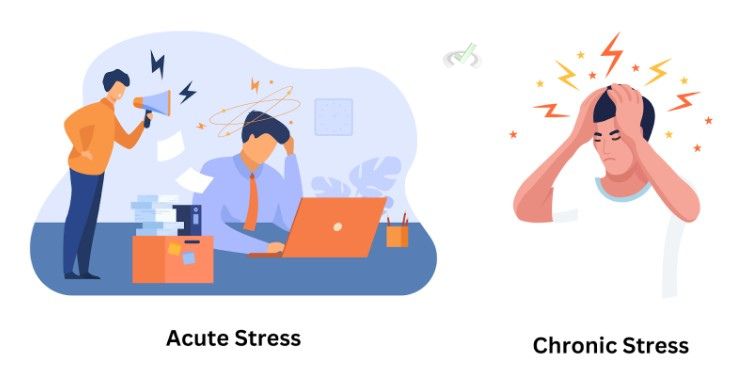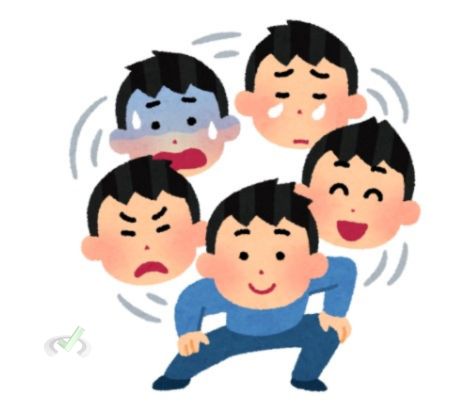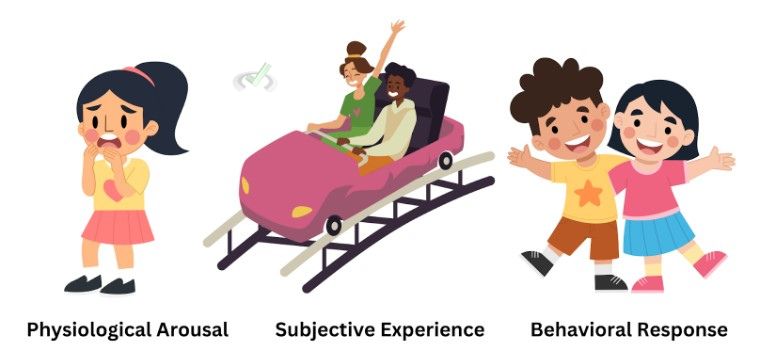Emotions are a fundamental part of the human experience. They influence how we think, feel, and behave daily. Understanding emotions can help us navigate personal and social challenges more effectively. This study guide explores the components and roles of emotion, providing a comprehensive look at how emotions impact various aspects of our lives.
I. What is Stress?
Stress is a typical emotional response to demanding or threatening situations. It is the body's way of reacting to physical and psychological challenges. Stress can be positive, helping us stay alert and perform well under pressure. However, long-term stress can have negative effects on our health and well-being.

A. Types of Stress
- Acute Stress Acute stress is short-term and arises from specific events or situations. It can be beneficial by helping us react quickly to danger or deadlines.
- Chronic Stress Chronic stress is long-term and results from ongoing situations like financial problems or a stressful job. This type of stress may lead to serious health issues if not appropriately managed.
B. Physical and Emotional Effects of Stress
- Physical Effects Stress triggers the release of hormones like adrenaline and cortisol. These hormones prepare the body for a "fight or flight" response. It can lead to increased heart rate, rapid breathing, and muscle tension.
- Emotional Effects Stress can also impact emotions, leading to feelings of anxiety, irritability, or depression. It can affect concentration and decision-making abilities, making it harder to cope with daily tasks.
II. Components of Emotion
Emotions are complex and involve several different components.

To better understand them, let's break down the main parts and their roles.

A. Physiological Arousal
Psychological arousal is how our body reacts to an emotion. For example, when you feel scared, your heart might beat faster or start to sweat.
The autonomic nervous system (ANS) controls this reaction. The ANS has two parts:
- Sympathetic system: Prepares the body’s response for fight or flight.
- Parasympathetic system: Calms the body down.
B. Subjective Experience
Subjective experience is how we feel an emotion. Even if we are in the same situation, everyone might feel differently.
For example, a roller coaster might be exciting for one person but terrifying for another. This component is influenced by personal history, context, and individual differences in emotional regulation. Emotional regulation is how well we manage and respond to our emotional experiences.
C. Behavioral Response
Behavioral response is how we express our emotions. It includes facial expressions, body language, and actions. For example, when you're happy, you might smile or laugh.
Cultural norms and individual differences often influence these responses. Cultural norms are the rules or expectations for behavior within a particular culture.
III. Roles of Emotion
Emotions serve several important roles in our lives. They help us survive, make decisions, and communicate with others. Let's explore these roles in more detail.

A. Survival
Emotions like fear can help us stay safe. For example, fear might make you run away if you see a snake. This helps protect you from potential danger.
The amygdala in the brain is important in processing fear and threat-related stimuli. Emotions can also help us remember important information.
If something scares you, you are more likely to remember it in the future. It helps you avoid similar situations.
B. Decision-Making
Emotions play a big part in the decisions we make. For instance, if you feel good about a choice, you are more likely to go for it. Conversely, if something makes you feel uneasy, you might avoid it.
This helps us navigate through life by using our feelings as a guide. Emotions interact with cognitive processes in the prefrontal cortex. It is a part of the brain that helps us think, plan, and influence decision-making.
C. Communication
We use emotions to communicate with others. Facial expressions, like smiling or frowning, can tell others how we feel. This helps build relationships and allows others to understand us better.
It also helps us work together and solve problems as a team. Mirror neurons enable us to empathize and understand others' emotions. Mirror neurons are brain cells that respond when we do something and see someone else doing the same thing.
IV. Bridge/Overlap
Understanding emotions is important in psychology and other areas. Let's examine how emotions relate to these fields.
A. Personal Relationships
Understanding and managing emotions can lead to healthier and more fulfilling connections in personal relationships. Empathy is the ability to understand and share the feelings of others. It is important in building strong relationships.
B. Mental Health
Emotions are also connected to mental health. Emotional dysregulation can lead to psychological disorders such as anxiety and depression. Emotional dysregulation means having trouble managing your emotions in a way that is appropriate for the situation.
C. Neuroscience
The limbic system, including the amygdala and hippocampus, is crucial for emotional processing and is a critical topic in neuroscience, another MCAT subject area. These brain parts help us process and respond to emotions.
D. Theories of Emotion
Additionally, understanding the theories of emotion, like the James-Lange theory, Cannon-Bard theory, and Schachter-Singer two-factor theory, is essential for a comprehensive understanding. These theories explain different ideas about how emotions work in our bodies and minds.
V. Wrap Up/Key Terms
Let's summarize what we've learned about the components and roles of emotion:
A. Components of Emotion
- Physiological Arousal: The autonomic nervous system controls the body's physical response to emotions (e.g., heart rate, sweating).
- Subjective Experience: Personal feelings of emotion (e.g., excitement, fear) influenced by personal history and context.
- Behavioral Response: Expression of emotions through actions and body language (e.g., smiling, crying) influenced by cultural norms.
B. Roles of Emotion
- Survival: Helps protect us from danger and helps us remember meaningful experiences involving the amygdala.
- Decision-Making: Guides our choices and actions, involving the prefrontal cortex.
- Communication: Allows us to express feelings and build relationships involving mirror neurons.
C. Key Terms
- Autonomic Nervous System: Controls body responses not under conscious control.
- Sympathetic System: Prepares the body for action.
- Parasympathetic System: Calms the body down.
- Amygdala: The part of the brain involved in emotion, especially fear.
- Prefrontal Cortex: The area in the brain is involved in planning and decision-making.
- Mirror Neurons: Brain cells that help us understand others' actions and emotions.
- Limbic System: The brain system involved in emotions.
- Emotional Dysregulation: Difficulty managing emotions appropriately.
VI. Practice Questions
Sample Practice Question 1
Which of the following is an example of physiological arousal?
A. Feeling happy after receiving good news
B. Smiling at a friend
C. Sweating before a big exam
D. Laughing at a joke
Ans. C
Sweating before a big exam is a physical response to stress, a component of physiological arousal.
Sample Practice Question 2
How do emotions help in decision-making?
A. They have no impact on decisions
B. They only make decisions more challenging
C. They are irrelevant to the decision-making process
D. They guide choices by making us feel good or uneasy about options
Ans. D
Emotions influence our decisions by providing positive or negative feelings about different choices, helping us to decide.







 To help you achieve your goal MCAT score, we take turns hosting these
To help you achieve your goal MCAT score, we take turns hosting these 





















 reviews on TrustPilot
reviews on TrustPilot